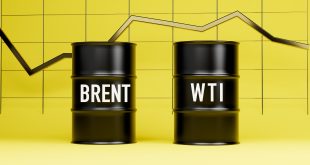Last week in the financial markets was packed with significant developments—both on the economic front, with new data and fresh indicators, and on the political front, culminating in the end of the government shutdown.
Beyond that, global equity movements drew considerable attention, accompanied by mounting concerns over a potential bubble in the artificial intelligence sector. At the same time, fears emerged that substantial investments could be withdrawn from this promising industry, adding another layer of uncertainty to the outlook.
USD weekly decline
The U.S. dollar ended the week slightly lower, pressured by a series of economic reports and cautious remarks from Federal Reserve officials. The decline followed last Friday’s Challenger, Gray & Christmas report, which showed that U.S. job cuts in October surged 175% year‑on‑year, the sharpest increase in 22 years. The data reinforced expectations that the Fed will keep interest rates elevated.
Additional weakness came from payroll figures indicating that private‑sector employers shed more jobs than they added in the four weeks ending October 25, with an average decline of 11,250 positions per week. This highlighted a cooling labor market and added further pressure on the dollar. Consumer sentiment also deteriorated, with the University of Michigan’s confidence index dropping 3.3 points to 50.3, its lowest level in nearly three and a half years, compared with expectations of 53.0.
Inflation expectations were mixed. The University of Michigan survey for November showed one‑year inflation expectations unexpectedly rising to 4.7%, while long‑term expectations (five to ten years) eased to 3.6%, below forecasts of 3.8%. The softer long‑term outlook helped limit the dollar’s decline.
Hawkish commentary from several Fed officials added to the cautious tone. Vice Chair Philip Jefferson warned against further rate cuts, noting that policy remains “restrictive” and that moving slowly toward a neutral rate is prudent. Susan Collins of the Boston Fed and Beth Hammack of the Cleveland Fed both favored holding rates steady, with Hammack stressing that persistent inflation remains a concern. Jeff Schmid of the Kansas City Fed argued that lowering rates would not resolve labor market challenges and could worsen inflation. Lorie Logan of the Dallas Fed echoed this view, saying she would not support additional cuts without clear evidence of faster disinflation.
In summary, the dollar’s limited weekly decline reflects a combination of weak labour market data, falling consumer confidence, and hawkish Fed rhetoric. While short‑term inflation expectations ticked higher, the broader message from policymakers suggests the Federal Reserve is in no rush to ease, keeping the dollar under cautious pressure.
US stocks loses a lot of points
After 43 days, the U.S. government shutdown has finally come to a close with the passage of a funding measure that extends operations through January 30, 2026.
Federal employees will receive their backpay, and essential programs such as SNAP are back online.
Economists estimate the shutdown shaved about 1.5 percentage points off fourth‑quarter growth, leaving projections in the 1.0%–1.5% range.
Even so, expectations point to a gradual rebound beginning in the first quarter of 2026 and continuing throughout the year.
Meanwhile, market leadership appears to be shifting.
After months of strong gains since April, technology and AI stocks have stumbled in November.
Large‑cap tech names are grappling with heavier debt loads and a pivot toward more asset‑intensive strategies, raising concerns about margins and free cash flow.
Against this backdrop, diversification looks increasingly important.
Opportunities are emerging beyond the tech sector—in U.S. large‑cap and mid‑cap equities, as well as in health care, industrials, and select emerging markets.
These areas may provide balance for investors looking to temper their exposure to technology while positioning for recovery in 2026.
Euro ends higher
The euro finished last week with gains, buoyed by the softness of the U.S. dollar and supportive remarks from the European Central Bank (ECB) suggesting no further rate cuts in the near term.
The single currency has recently benefited from the divergence in monetary policy between the ECB and the Federal Reserve.
While the ECB is broadly viewed as having concluded its rate‑cutting cycle, expectations point to the Fed delivering several additional cuts by the end of 2026.
This outlook reduces the relative appeal of the dollar and strengthens the euro.
Economic data also underpinned the euro’s advance. September figures showed German exports rising 1.4% month‑on‑month, well above forecasts of 0.5%, marking the strongest increase in ten months.
Imports climbed 3.1% month‑on‑month, compared with expectations of 0.5%, the fastest pace in eight months.
Eurozone GDP growth for the third quarter was revised upward from 1.3% to 1.4% year‑on‑year, reflecting a relatively stronger performance across the bloc.
Still, the euro faced some pressure from a surprise drop in Germany’s November ZEW economic sentiment index, which revealed an unexpected decline in investor confidence in the country’s outlook. The currency managed to offset this weakness by continuing to draw support from the policy divergence between the Fed and the ECB.
Isabel Schnabel, a member of the ECB’s Governing Council, reinforced this stance, saying current interest rates are “entirely appropriate.”
She noted that the eurozone economy is showing positive momentum and that inflation risks remain slightly tilted to the upside, strengthening the case for the ECB to hold rates steady rather than pursue further cuts.
Japanese Yen Pressured by Fiscal and Political Uncertainty
The yen recorded its second straight week of losses against the U.S. dollar, weighed down by fiscal and political uncertainty in Japan, as well as economic data and movements in U.S. and Japanese bond yields.
Concerns mounted after Prime Minister Takaitchi signaled a more expansionary fiscal stance, announcing earlier in the week that she would abandon the annual balanced‑budget target. Expectations of looser fiscal policy increase the likelihood that the Bank of Japan will maintain its quantitative easing program, which runs counter to its recent messaging that it aims to raise interest rates to contain inflation.
Quantitative easing poses risks for the yen, which is already under pressure and has fallen to troubling lows. This weakness prompted Japan’s finance minister to pledge support for the currency. At the same time, Finance Minister Katayama offered some relief, noting that “we have recently seen unilateral and rapid moves in the currency,” a remark widely interpreted as a hint that the government may intervene in the foreign‑exchange market to stabilize the yen.
Economic indicators provided additional support. The October Economy Watchers Survey rose by 4.6 points to 53.1, its highest level in nearly two years and well above expectations of 48.8. Machinery orders also surged 17% year‑on‑year in October, the strongest increase in more than three years. These figures reinforced confidence in Japan’s economic outlook and lent strength to the yen.
Even so, gains were limited by the resilience of the U.S. dollar, despite its own modest weekly losses. The yen also drew support from rising Japanese government bond yields, which benefited from higher producer prices.
Despite the pressures seen last week, the yen is expected to gradually draw more sustained support from the positive factors that emerged during the period.
Gold gains in spite of downside pressure
Gold ended the week higher, supported by sustained central bank demand. The People’s Bank of China reported that its gold reserves rose in October to 74.09 million ounces, marking the twelfth consecutive monthly increase.
The World Gold Council also noted that central banks purchased 220 tons of gold in the third quarter, a 28% rise from the second quarter.
Safe‑haven demand remained firm amid the U.S. government shutdown, uncertainty over tariffs, geopolitical risks, continued central bank buying, and political tensions surrounding the Federal Reserve’s independence.
Gold additionally gained from concerns tied to the shutdown before an agreement was reached to fund federal agencies.
A further boost to gold’s roughly 2.0% weekly rise came from corporate developments, including SoftBank Group’s announcement that it had sold its entire stake in Nvidia in a deal valued at about $5.83 billion, as part of a strategy to increase investment in OpenAI, the developer of ChatGPT.
SoftBank said it sold 32.1 million Nvidia shares in October and divested part of its stake in T‑Mobile for $9.17 billion.
Although SoftBank stressed that these moves do not signal a retreat from artificial intelligence and that proceeds would be directed to OpenAI, the transactions nonetheless sparked market concerns about the sector’s investment outlook.
Even so, gold faced headwinds from Federal Reserve communications. Policymakers struck a broadly hawkish tone, signalling reluctance to pursue further rate cuts, which exerted pressure on the precious metal even as safe‑haven demand persisted.
Bitcoin Ends the Week Lower
Bitcoin finished last week with sharp losses, falling about 9.0% as investors stepped back from high‑risk assets and speculative trades. The decline extended beyond Bitcoin, weighing on other cryptocurrencies and companies tied to the sector.
Markets turned cautious amid persistent global economic and financial uncertainty, prompting reduced exposure to digital assets. The drop reflects a shift in liquidity toward safer havens—such as government bonds and gold—amid heightened volatility.
Rising U.S. Treasury yields, which increased the dollar’s appeal relative to cryptocurrencies, and ongoing regulatory pressures across major markets further contributed to the slump.
Despite remaining at relatively elevated levels compared with the start of the year, Bitcoin’s latest losses have raised doubts about the market’s ability to regain the momentum seen in recent months. Continued strains on global liquidity, alongside tighter monetary policies in some economies, could limit the chances of a swift recovery for digital assets.
In summary, Bitcoin ended the week down nearly 9%, as investors moved away from risk amid regulatory headwinds and higher U.S. bond yields—underscoring the market’s fragility in a volatile global environment.
The Week Ahead
On Wednesday, markets will turn their attention to the release of the Federal Reserve’s meeting minutes, which are expected to provide insight into recent policy discussions and the likelihood of a rate cut in December.
The minutes come at a time of heightened uncertainty, with several key data points missing—most notably U.S. employment figures, which were delayed due to the government shutdown.
Global markets also face a pivotal moment with Nvidia’s earnings report on Wednesday.
The results carry particular weight following SoftBank’s major divestment of its entire stake in the chipmaker.
Nvidia’s third‑quarter performance will be closely watched to determine whether investors in the artificial intelligence sector remain committed to channelling fresh capital into this fast‑growing industry, or whether they now see it as time to lock in profits.
Retail earnings will likewise be in focus, offering a window into consumer spending ahead of the holiday season.
Reports begin Tuesday with Home Depot, followed by Target on Wednesday and Walmart on Thursday.
Because these results directly reflect consumer behavior, they may provide the Fed with valuable signals about inflation trends and the broader economic outlook.
Meanwhile, Chinese tech giants PDD and Baidu will release their earnings, offering important clues about consumer confidence in China and the performance of its technology sector, particularly against the backdrop of ongoing U.S.–China trade tensions.
 Noor Trends News, Technical Analysis, Educational Tools and Recommendations
Noor Trends News, Technical Analysis, Educational Tools and Recommendations





